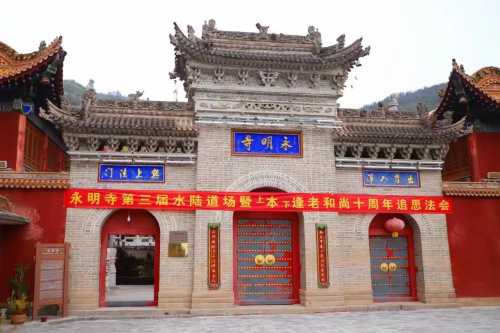Popular Trip Moments
Yongming Temple in Tianshui: A key town on the Silk Road where Chinese and Indian Buddhist cultures blended. | Daxiangshan is a must-visit when visiting Tianshui. | No wonder it's called the land of grottoes! I was amazed by a county in Gansu! | [Gansu Daxiang Mountain - Explore the Secret Land of the Ancient Silk Road] | You have to visit Gangu, climb Elephant Mountain, and experience the first county in China. | Gangu Daxiang Mountain: A hidden gem of grottoes in Gansu. | A very niche track in Tianshui, Gansu! Because of this... | Tianshui Daxiang Mountain | The beauty of thousand-year Buddhist charm. | Explore the Cultural Treasures of the Ancient Silk Road: Gangu Da Xiangshan Park. | Gangu County - the first county in China. | Gangu Da Xiang Mountain | I must go to Dafeng Daxiang Mountain in Tianshui this time. | Daxiangshan Grottoes | Gangu: A picturesque small city in the snow | The Gangu Daxiangshan Buddha is the highest in the country in terms of relative height
Popular Destinations
Anzoategui Travel | Murray County Travel | Phaya Yen Travel | Paraguay Travel | Rocha Travel | Dobbs Ferry Travel | Kortrijk Travel | Canela Travel | Cascade Travel | Tunis Travel | Tawe-Uchaf Travel | Split Travel | Smith County Travel | Bhubaneswar Travel | Hope Town Travel | Ayia Napa Travel | DeSoto County Travel | Los Cabos Travel | Xinyi Travel | Risaralda Travel | Zhashui Travel | Distrito Metropolitano de Quito Travel | Santiago de Compostela Travel | Ascoli Piceno Travel | Brussels-Capital Region Travel | East Dorset Travel | Agawa District Travel | Toyota Travel
Recommended Attractions at Popular Destinations
Popular Attractions in Bangkok | Popular Attractions in Manila | Popular Attractions in Tokyo | Popular Attractions in Taipei | Popular Attractions in Hong Kong | Popular Attractions in Seoul | Popular Attractions in Kuala Lumpur | Popular Attractions in Los Angeles | Popular Attractions in Shanghai | Popular Attractions in New York | Popular Attractions in Shenzhen | Popular Attractions in Osaka | Popular Attractions in Singapore | Popular Attractions in London | Popular Attractions in Guangzhou | Popular Attractions in San Francisco | Popular Attractions in Beijing | Popular Attractions in Macau | Popular Attractions in Bali | Popular Attractions in Jakarta | Popular Attractions in Paris | Popular Attractions in Ho Chi Minh City | Popular Attractions in Istanbul | Popular Attractions in Phuket | Popular Attractions in Chicago | Popular Attractions in Seattle | Popular Attractions in Toronto | Popular Attractions in Orlando | Popular Attractions in Cebu | Popular Attractions in Chiang Mai
Popular Attractions
He Garden | Gumulan Yard Shita | Guanyin Mountain | Wenfeng Tower | Crane Temple | The Shi Kefa Museum | Dalianwan Fort | Yangzhou Shuangbo Museum | Hengshan Mountain College | Zhanqiao Park | Maoshan Mountain Scenic Area | Nanshan Scenic Area | St. Dominic's Church | St Anthony's Church Macau | St. Augustine's Church | Huanglong National Scenic Area | Shimei Bay | Fred Haigh Park | LITTLE FARMERS - ubytování, oslavy, firemní akce | Parco Villa San Donato | Shreve Memorial Library - Higginbotham-Bryson Branch | Stadion Gelora Samador Maumere | Hokkeji | The Museum of V. G. Rasputin | North Buncombe Pool And Softball Fields | Lanbowan Hot Spring Water World | Raheja garden | Zhongshan Park | Quyuanfenghe (Breeze-Rustled Lotus In Quyuan Garden) | Nine Creeks in the Misty Forest
Popular Restaurants in Gangu
玉林串串香(甘谷店) | 锅来锅往砂锅店(甘谷店) | 绝味鸭脖(甘谷尚都百汇店) | Jiuyuejiaohaixianzixuanhuoguochaoshi (gangu) | XU SHENG YUAN KANG ZHUANG LU DIAN | 金成大酒店海鲜自助 | 牧羊人羊肉泡馍馆 | 甘谷花之林餐饮有限公司 | 季念日红利来西饼生日蛋糕(新城街店) | 康乐蛋糕(老广场店) | 爱的礼物(尚都百汇购物中心店) | 爱心园(六峰商厦店) | 麦香园(大什字广场店) | 兄弟小炒王(甘谷店) | Lepaikezha Chicken Hamburger (gangu) | HU LU WA PAN AN DIAN | 巨丰灶台鱼(甘谷店) | 香辣嫂(东巷店) | 老狼大盘鸡(甘谷店) | 卡诺琳(尚都百汇购物中心店) | 华莱士·全鸡汉堡(甘谷西关店) | 格调奶茶(甘谷店) | 文录羊肉 | 雪娃娃(大什字广场店) | Aibilin Cake | 美味蛋糕坊 | 广村奶茶屋 | 葫芦娃(新广场店) | Guoqiao Rice Noodles (gangudongxiangzong) | Maidesike (gangu)
Popular Ranked Lists
Popular Best Things to Do in Iquitos | Top 50 Luxury Hotels near Malvern Hills | Popular Premium Hotels Near Toledo | Popular Best Things to Do in Bishkek | Popular Best Things to Do in Friuli Venezia Giulia | Popular Best Things to Do in Gudauri | Top 50 Must-Visit Restaurants in Zurich | Top 50 Must-Visit Restaurants in Shangri-La | Top 50 Must-Visit Restaurants in Kota Kinabalu | Top 20 Must-Visit Restaurants in Qingyuan | Top 50 Luxury Hotels near Montafon | Top 50 Luxury Hotels near Taihu Lake Longemont Paradise | Popular Best Things to Do in Nis | Popular Best Things to Do in Kopavogur | Popular Luxury Hotels Near Baili Rhododendron Scenic Area | Top 50 Luxury Hotels near Alpe di Siusi | Top 50 Must-Visit Restaurants in Amsterdam | Popular Best Things to Do in Balapitiya | Top 50 Luxury Hotels near Turkish Riviera | Popular Best Things to Do in Umbria | Top 10 Luxury Hotels near Valle d'Itria | Top 50 Must-Visit Restaurants in Wuxi | Top 50 Best Things to Do in Sicily | Top 50 Must-Visit Restaurants in Da Nang | Popular Premium Hotels in Naivasha | Popular Best Things to Do in Cartagena | Top 50 Must-Visit Restaurants in Lijiang | Top 50 Luxury Hotels near Jungfrau Region | Popular Best Things to Do in Medellin | Top 10 Best Things to Do in Centre-Val de Loire
About
Payment methods
Our partners
Copyright © 2025 Trip.com Travel Singapore Pte. Ltd. All rights reserved
Site Operator: Trip.com Travel Singapore Pte. Ltd.
Site Operator: Trip.com Travel Singapore Pte. Ltd.


















